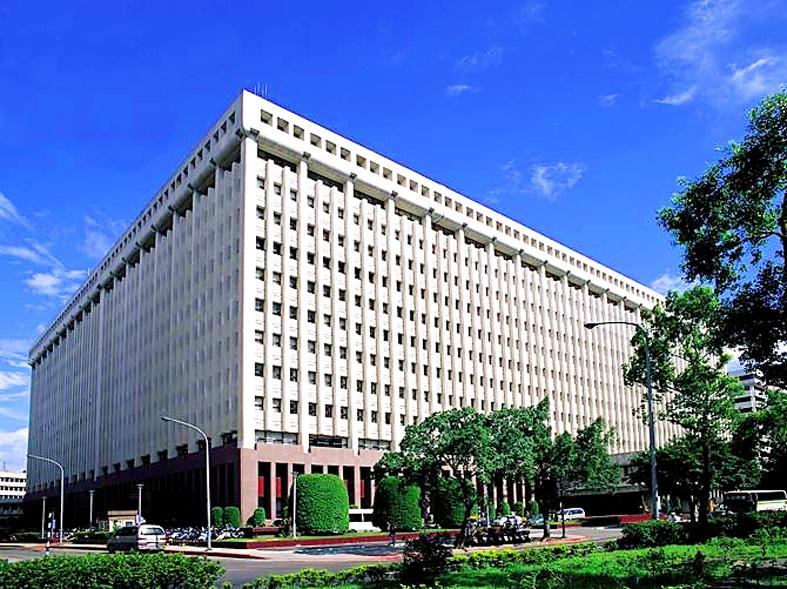The four major units of Formosa Plastics Group (FPG, 台塑集團), Taiwan’s largest industrial conglomerate, on Friday reported a combined net profit of NT$63.39 billion (US$2.23 billion) in the first quarter, up 47 percent from the previous quarter and improving from a net loss of NT$13.99 billion a year earlier.
In a statement, the four units — Formosa Plastics Corp (FPC, 台灣塑膠), Nan Ya Plastics Corp (南亞塑膠), Formosa Chemicals & Fibre Corp (台灣化纖) and Formosa Petrochemical Corp (台塑石化) — said that they benefited from higher crude oil prices during the quarter, driven up by a surprise cut in production by Saudi Arabia and a blizzard in Texas.
Their combined revenue grew 17.4 percent quarter-on-quarter and 17.8 percent year-on-year to NT$364.77 billion in the first quarter, FPG said.

Photo: Chang Hui-wen, Taipei Times
In the January-to-March period, Formosa Plastics posted net profit of NT$14.9 billion, or earnings per share of NT$2.35 — the highest of the four units.
The company said that a hike in crude oil prices boosted petrochemical product prices by 7 to 58 percent.
Nan Ya Plastics, which posted net profit of NT$17.65 billion, or NT$2.23 per share, said that it was helped by increased demand for electronics materials, driven by an increase in emerging technologies — such as 5G applications and electric vehicles — and a need for devices used in distance learning and remote working.
The prices of bisphenol A, plasticizer and ethylene glycol moved higher because of a supply shortage after the Texas blizzard, the company added.
Formosa Chemicals & Fibre, which benefited from rising demand from China and from clients trying to build up inventories that had been drawn down, posted net profit of NT$12.87 billion, or NT$2.20 per share.
Formosa Petrochemical’s net profit rose 75.8 percent from the fourth quarter of last year to NT$17.98 billion, or earnings per share of NT$1.88, as the company benefited from higher product prices, in particular in its olefins business.

The DBS Foundation yesterday announced the launch of two flagship programs, “Silver Motion” and “Happier Caregiver, Healthier Seniors,” in partnership with CCILU Ltd, Hondao Senior Citizens’ Welfare Foundation and the Garden of Hope Foundation to help Taiwan face the challenges of a rapidly aging population. The foundation said it would invest S$4.91 million (US$3.8 million) over three years to foster inclusion and resilience in an aging society. “Aging may bring challenges, but it also brings opportunities. With many Asian markets rapidly becoming super-aged, the DBS Foundation is working with a regional ecosystem of like-minded partners across the private, public and people sectors

BREAKTHROUGH TECH: Powertech expects its fan-out PLP system to become mainstream, saying it can offer three-times greater production throughput Chip packaging service provider Powertech Technology Inc (力成科技) plans to more than double its capital expenditures next year to more than NT$40 billion (US$1.31 billion) as demand for its new panel-level packaging (PLP) technology, primarily used in chips for artificial intelligence (AI) applications, has greatly exceeded what it can supply. A significant portion of the budget, about US$1 billion, would be earmarked for fan-out PLP technology, Powertech told investors yesterday. Its heavy investment in fan-out PLP technology over the past 10 years is expected to bear fruit in 2027 after the technology enters volume production, it said, adding that the tech would

YEAR-END BOOST: The holiday shopping season in the US and Europe, combined with rising demand for AI applications, is expected to drive exports to a new high, the NDC said Taiwan’s business climate monitor improved last month, transitioning from steady growth for the first time in five months, as robust global demand for artificial intelligence (AI) products and new iPhone shipments boosted exports and corporate sales, the National Development Council (NDC) said yesterday. The council uses a five-color system to measure the nation’s economic state, with “green” indicating steady growth, “red” suggesting a boom and “blue” reflecting a recession. “Yellow-red” and “yellow-blue” suggest a transition to a stronger or weaker condition. The total score of the monitor’s composite index rose to 35 points from a revised 31 in August, ending a four-month

RUN IT BACK: A succesful first project working with hyperscalers to design chips encouraged MediaTek to start a second project, aiming to hit stride in 2028 MediaTek Inc (聯發科), the world’s biggest smartphone chip supplier, yesterday said it is engaging a second hyperscaler to help design artificial intelligence (AI) accelerators used in data centers following a similar project expected to generate revenue streams soon. The first AI accelerator project is to bring in US$1 billion revenue next year and several billion US dollars more in 2027, MediaTek chief executive officer Rick Tsai (蔡力行) told a virtual investor conference yesterday. The second AI accelerator project is expected to contribute to revenue beginning in 2028, Tsai said. MediaTek yesterday raised its revenue forecast for the global AI accelerator used